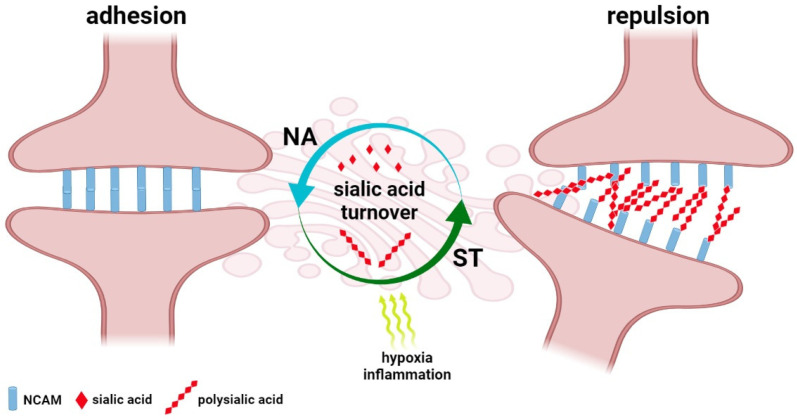Figure 3.
The regulatory function of polysialic acid turnover in the brain. Polysialic acid (PSA) is a linear homopolymer of a 2,8-linked sialic acid that forms a sugar chain with steric properties due to a high density of negative charges. At the posttranslational level, NCAMs are modified through attachment of PSA in the Golgi compartment by typical mechanism of N-linked core glycosylation. In result, the 2,8-linked sialic acid prevents homophilic interactions between synaptic NCAMs and their heterophilic interactions with homologous ligands. These alteration in the brain are accompanied by an increase in the number of PSA-NCAM immunoreactive neurons that results in the modification of synapse density in response to degenerative factors, including inflammation and hypoxia.

